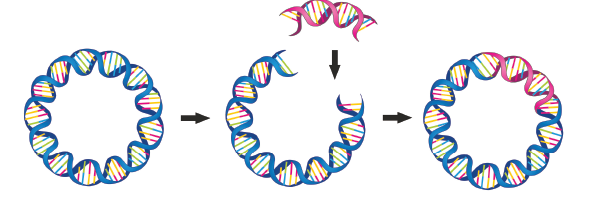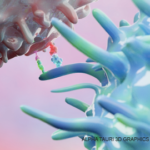Rheumatoid arthritis (RA) can be typed, grouped and categorized in different ways, and subgroup identification could help guide future research and treatment strategies based on which subtypes respond to which treatment. A new study explored an approach associating gene expression profiling with histologic analysis of synovium samples to define RA subtypes and then examined how these findings may integrate with each other.1

Dr. Orange
Currently, no reliable biomarkers exist to predict therapeutic response in RA patients, says physician-scientist Dana E. Orange, MD, MSc, of the Hospital for Special Surgery, New York City. Classifications derived from synovium are not yet factored into RA diagnostic criteria or treatment guidelines. Her team identified three distinct RA synovial subtypes using RNA sequencing data and applied machine learning technology to develop a method for integrating and weighing scores of histology features in a manner that predicts gene expression subtype.

Soleil Nordicleil Nordic / shutterstock.com
The researchers examined 20 histologic features on synovial tissue samples from 123 consecutive RA patients undergoing arthroplasty at the Hospital for Special Surgery, along with six osteoarthritis patients. The study used standard hematoxylin and eosin (H&E) stain-based assay slides, a technique commonly used in medical labs, to assess histologic features.
On a subset of 45 tissue samples, they also performed gene expression profiling and identified three distinct molecular subtypes of RA: high, low and mixed inflammation subtypes. “We identified three clusters of gene expression in RA. How could we put them together when it wasn’t obvious how to associate gene expression data with histological findings?” Dr. Orange says. “They are very different types of data. That’s where we applied machine learning.”
Machine learning is a branch of computer science that uses statistical technology to “train” computers to progressively improve their performance on a specific task by breaking data down into predictive units as the analysis moves forward. Support vector machine learning uses vectors to break down the data.
In this case, the three gene expression subtypes served as labels. Support vector machine learning was used to identify the optimal weights for the histologic features allowing for prediction of the gene expression subtypes using histology data only. By using the robust RNA expression data to train the histology scoring system, the researchers could then apply their histology scoring algorithm to better interpret samples that only had histologic assessments, Dr. Orange explains. The samples with matched RNA expression and histology data were like a Rosetta Stone that enabled interpretation of the histology-only samples.
Results showed the machine learning-generated method of histology scoring was associated with blood tests for inflammation such as levels of erythrocyte sedimentation rate, C-reactive protein (CRP) and autoantibodies, such as anti-cyclic citrullinated peptide and rheumatoid factor. In summary, consensus clustering of gene expression revealed three distinct synovial subtypes:
- High inflammatory, characterized by extensive infiltration of leukocytes and higher levels of plasma cells, synovial lining hyperplasia, Russell bodies, fibrin and neutrophils;
- Low inflammatory, characterized by enrichment in pathways such as transforming growth factor, glycoproteins and neuronal genes, but with little evidence of inflammatory markers in the blood; and
- A mixed subtype.
The results suggested that mechanisms of pain may also differ by synovial subtype, with CRP levels corresponding to the severity of the patient’s pain in the high inflammation subgroup but not in the other subgroups. Further, some patients in the low inflammatory group exhibited high swollen and tender joint counts.
Histologic analysis revealed a potential explanation for this observation. Specifically, mucin, an extra-cellular matrix protein that has a gelatinous quality because of retained water, was abundant in the low inflammatory group. Dr. Orange says, “When mucin is present in the joint, the examining rheumatologist may not always be able to tell whether the physical exam finding of swelling is due to mucin or due to immune cell infiltration, which could make it harder to know how to optimally treat the patient,” she says.
“Maybe for patients who aren’t responding the way we normally think they should and have no inflammation in their blood, a synovial biopsy might help to define the right treatment approach,” Dr. Orange says. “We’re also very interested in developing blood and imaging biomarkers of the synovial subtypes so patients won’t need to undergo synovial biopsy.”
Distinguishing RA Subgroups
Paul Peter Tak, MD, PhD, a senior vice president at GSK Pharmaceuticals in Stevenage, England, and professor of medicine at the University of Amsterdam, commends the new study’s authors for highlighting a new way of distinguishing different RA subgroups. Markers applied in immune-histologic analysis of synovial tissue can also differentiate RA from other forms of arthritis, he says. “The authors clearly showed three distinct RNA molecular subgroups.” A previous study by Dr. Tak and colleagues showed heterogeneity of RA based on synovial tissue analysis by taking biopsy samples from patients early in the course of their disease.2
An important take-home message from the new study, Dr. Tak says, is that it confirms and extends the fact that RA, as defined clinically, is not a single pathogenic disease entity. Therefore, it should be considered a syndrome, rather than a disease.
“RA is heterogeneous, but people sometimes think about it in superficial ways without looking through the lens of molecular medicine. This is very relevant for discovery and development of new treatments for different subsets of RA,” Dr. Tak says. The kind of subtyping illustrated in the Orange study, he notes, eventually could point toward stratified and precision medicine approaches in the treatment of RA.
Larry Beresford is a medical journalist in Oakland, Calif.
References
- Orange DE, Agius P, DeCarlo EF, et al. Identification of three rheumatoid arthritis disease subtypes by machine learning integration of synovial histologic features and RNA sequencing data. Arthritis Rheumatol. 2018 May;70(5):690–701.
- van Baarsen LG, Wijbrandts CA, Timmer TC, et al. Synovial tissue heterogeneity in rheumatoid arthritis in relation to disease activity and biomarkers in peripheral blood. Arthritis Rheum. 2010 Jun;62(6):1602–1607.
A Synovitis Pathology Website
The Hospital for Special Surgery has developed a synovitis pathology website with a scoring image directory for synovial pathology, instructions for how to score histology features and the machine-learning algorithm described in this article.

